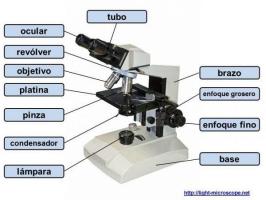Characteristics of the OCEANIC crust

The earth's crust is outermost layer of our planet and is divided into continental crust and oceanic crust. As its name tells us, the oceanic crust is the part of the earth's crust that is available in the oceans. It is, therefore, a very important part, since occupies two thirds of the Earth's surface, but it is much less studied than the continental crust. Therefore, in this lesson from a TEACHER we will focus on the features of oceanic crust. If you want to find out, join us!
Before beginning to know the characteristics of the oceanic crust, it is important that we know what the oceanic crust is.
As is the case with the continental crust, the oceanic separates the surface of the earth of the earth's mantle, that is to say, of the inner layer of the earth composed of viscous and high-temperature materials. Otherwise, these two sections of the earth's crust have great differences between them.
- To begin with, the thickness of the continental crust is much greater than the oceanic, being on average 35000 meters, compared to the 7000 of the oceanic.
- Second, there is the age of plates, being in its oceanic part of about 180 million years approximate, while in its continental part of about 3500 million years.

Image: Web Geology
Formerly, it was believed that the ocean floor was a great plain, but over time it was discovered that oceanic crust had landforms like the continental crust. Thus, on the seabed we can also find mountains, trenches or volcanoes and even perceive seismic and volcanic activity from the continents.
Here we leave you a review of the characteristics of the oceanic crust and its structure.
Continental margins and slopes
Although we have said that the oceanic crust is covered by the ocean, we must bear in mind that doesn't exactly start on the shores, but the first few meters after it is also considered continental crust. The actual beginning of oceanic crust is at slopes that can reach 4,000 meters deep and are found a few meters or several kilometers from the coast. These slopes are called slopes.
Continental margins are called spaces that exist between the coasts and the slopes. In these margins the depths are not great, up to 200 meters, and it is in them where the greatest amount of marine fauna lives.
mid-ocean ridges
Mid-ocean ridges are another feature of oceanic crust. Are submarine ridges They are generated when magma from inside the mantle rises towards the crust and breaks it. Today there are underwater mountain ranges that exceed 80,000 kilometers in length generated over the years.
Are great mountain ranges They have fissures in their covers through which magma flows from the mantle continuously. Thanks to this, the oceanic crust is continuously renewed. This explains why oceanic crust is so much younger than continental crust.
Another consequence of this constant volcanic activitya is that the oceanic ridges emerge to the sea surface, creating some formations such as Easter Island in the Eastern Pacific or the Galapagos Islands near the territory of Chile.
abyssal plains
this are large flat expanses found between the continental slopes and the great oceanic ridges. They reach depths ranging from 3,000 to 5,000 meters. The soil of these plains is covered by layers of silt from the continental crust.
In these plains the water is cold and not much sunlight reaches the environment. Despite these two factors, life still develops in these areas, but the organisms that live here have physical characteristics that are different from life in the rest of the sea.
Guyots
These are trunk-shaped mountains with flattened tops. They are located in the middle of abyssal plains and reach up to 3,000 meters in altitude and 10,000 in diameter. The guyots have these forms because their covers emerge to the surface and are eroded by the waves until they become flat surfaces. Sometimes this erosion can be such that they are submerged up to 300 meters below the surface of the sea.
Abyssal trenches or marine trenches
These are narrow cracks that can reach thousands of meters deep at the bottom of the sea. Marine trenches can arise as a result of the collision between two tectonic plates, so they are also accompanied by certain volcanic and seismic activity, which is sometimes felt on the surface of the continents. These shocks usually occur between oceanic plate and other continental plate, so in the end these abyssal trenches are located close to the continental crust.
These abyssal trenches are very frequent to find them in the Western edge of the Pacific Ocean. Thus, for example, in this area we find the trench that reaches the greatest depth of the entire earth, reaching more than 11,000 meters deep. It is known as the Mariana Trench.



![ORGANS of the circulatory system and their FUNCTIONS [with images]](/f/4e8868df816b5be4b60d7c674887f607.jpg?width=300&height=200)